Roof Types and Solar: What Works Best for Your Home
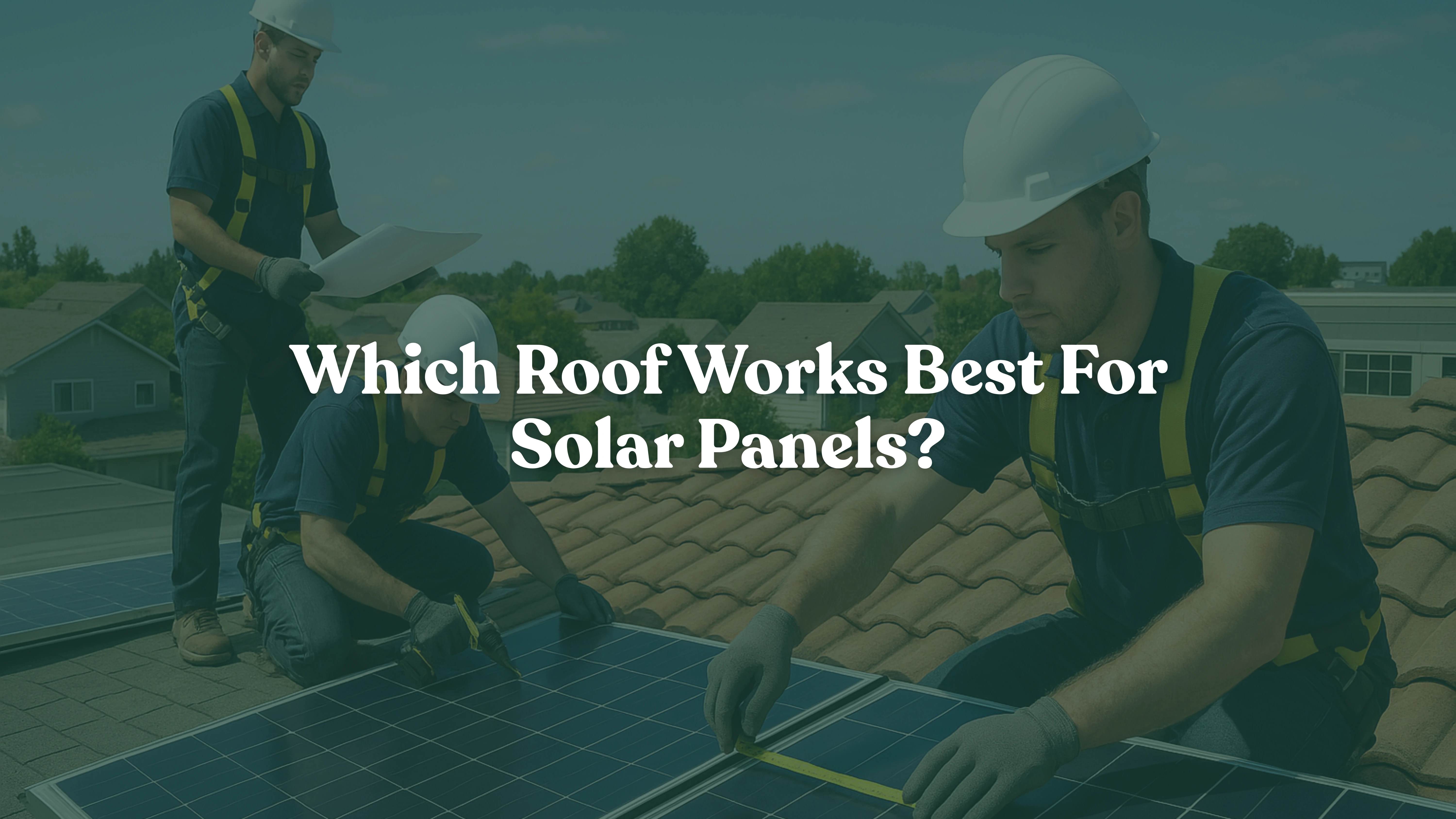
Roof Types and Solar: Finding the Right Fit for Your Home
The American solar industry continues its explosive growth trajectory, with over 10.8 gigawatts of capacity installed in Q1 2025 alone. However, one critical challenge consistently impacts installation success rates and project profitability: roof compatibility issues that can derail even the most promising solar projects. For US solar installers and EPCs, understanding which roof types and solar combinations deliver optimal results while avoiding costly complications represents the difference between sustainable business growth and project setbacks. This comprehensive guide addresses the most common roof types and solar installation challenges while providing actionable solutions for maximizing both system performance and customer satisfaction.
Premium Roof Types and Solar Installation Success
Asphalt Shingle Roofs: The Industry Standard
Asphalt shingles represent the gold standard for roof types and solar installations across America. These composite systems offer unmatched advantages that streamline the entire installation process:
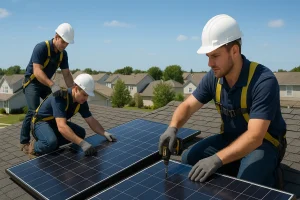
Installation Benefits: Straightforward mounting procedures using standard flashing techniques minimize specialized equipment requirements. The widespread familiarity with asphalt shingle installations means most solar technicians can work efficiently without extensive additional training. Cost-effective project execution results from streamlined processes and readily available mounting hardware.
Technical Considerations: The National Association of Home Builders indicates asphalt shingle roofs typically last 20 years, making timing crucial for solar installations. For shingles older than 15 years, recommend roof replacement before solar installation to avoid future reinstallation expenses that can significantly impact project economics.
Standing Seam Metal: Premium Performance Choice
Metal roofing with standing seams represents one of the most advantageous roof types and solar combinations available today. The elevated seams create perfect attachment points without roof penetration:
Installation Advantages: No drilling required since mounting clamps attach directly to standing seams, reducing labor time and eliminating potential leak points. Enhanced roof integrity maintains warranty coverage while providing superior long-term durability. Metal roofs lasting 30+ years align perfectly with solar system lifespans.
Market Growth: Demand for metal roofing increased 35% in 2024-2025, driven by durability concerns and energy efficiency requirements, making this roof type increasingly common for solar projects.
Tile Roofs: Specialized Installation Requirements
Clay and concrete tile installations demand specialized expertise but remain viable options for roof types and solar projects when handled properly:
Installation Challenges: Tile fragility requires careful navigation using protective walk pads and experienced installation teams. Specialized mounting systems designed specifically for tile applications ensure proper weight distribution and weatherproofing. Higher labor costs reflect the complex procedures necessary for successful installations.
Best Practices: Comprehensive structural analysis before installation prevents costly surprises. Professional mounting systems integrate seamlessly with tile configurations while maintaining roof integrity and aesthetic appeal.
Challenging Roof Types and Solar Solutions
Flat Roofs: Ballast System Innovation
Flat roof installations require different approaches but offer unique advantages for roof types and solar projects. Ballast systems became the preferred method in 2025, preserving warranties while ensuring secure installations:
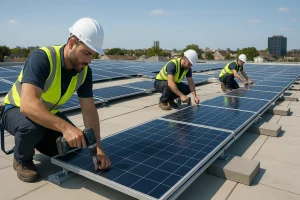
Ballast System Benefits: Non-penetrating installation maintains roof warranty coverage while providing excellent system stability. Easier maintenance access reduces long-term service costs compared to sloped installations. Optimal panel positioning maximizes energy production potential through precise angle adjustments.
Weight Management: Ballast systems add 4-8 pounds per square foot, requiring professional structural evaluation to ensure adequate load capacity for safe installation.
Wood Shake Limitations
Wood shake roofs present significant challenges for roof types and solar installations due to multiple risk factors:
Material Limitations: Wood shakes lack the durability necessary to support solar panel weight over extended periods. Fire safety concerns lead many municipalities to prohibit solar installations on wood roofing materials. Potential for wood rot under panels creates long-term maintenance complications.
Alternative Solutions: Ground-mounted systems or roof replacement with compatible materials provide viable alternatives for customers with wood shake roofing.
Slate Installation Complexities
Slate represents one of the most challenging roof types and solar combinations due to material characteristics:
Installation Risks: Slate brittleness leads to cracking during drilling operations, requiring tile replacement and increasing project costs. Specialized mounting techniques demand experienced installation teams familiar with natural stone roofing. High material costs make damage particularly expensive to repair.
Critical Assessment Factors Beyond Material Type
Structural Integrity Evaluation
Professional structural engineering analysis remains essential for all roof types and solar installations. Inadequate assessment can result in system failure, property damage, and liability issues:
Key Evaluation Areas: Dead load calculations including panel weight, mounting systems, and ballast requirements. Live load considerations for snow accumulation in northern climates. Wind uplift resistance for coastal and high-wind regions. Seismic considerations for earthquake-prone areas.
Timing Roof Replacement with Solar
Coordinating roof replacement with solar installation provides significant advantages for aging roof systems:
Financial Benefits: Combined project savings reduce scaffolding and labor duplication costs. Tax credit eligibility extends to roof replacement when performed with solar installation. Extended system lifespan results from proper roof foundation preparation.
Age Guidelines: Roofs over 20 years old typically require replacement before solar installation. Roofs between 15-20 years need individual assessment based on condition and material type.
Regional Considerations for Roof Types and Solar
Climate-Specific Performance
Different roof materials perform optimally in specific climate conditions:
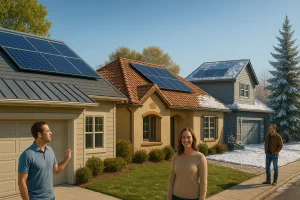
Hot Climate Optimization: Metal roofs provide excellent heat dissipation, reducing panel operating temperatures. Tile roofs offer superior thermal mass benefits for temperature regulation. Cool roofing materials significantly reduce cooling costs in southern regions.
Cold Climate Considerations: Asphalt shingles handle freeze-thaw cycles effectively without compromising integrity. Standing seam metal facilitates snow shedding, reducing load concerns. Proper insulation integration becomes critical for northern installations.
Local Building Code Compliance
Solar installations must conform to varying local requirements across different jurisdictions:
Code Variations: Fire safety requirements affect wood roof installation permissions. Wind load specifications vary significantly in coastal regions. Snow load calculations require regional expertise in northern climates. Seismic considerations impact mounting system specifications.
Installation Best Practices by Material
Quality Control Standards
Maintenance requirements vary significantly among roof types and solar combinations:
Material-Specific Maintenance: Flat roof systems require semi-annual cleaning due to debris accumulation. Tile installations need careful inspection for cracked or displaced tiles. Metal roofs benefit from periodic fastener inspection and tightening.
Technology Integration Advances
Lighter-weight panels and improved mounting systems reduce installation complexity across all roof types and solar applications. Advanced design tools like Aurora and Helioscope optimize placement for maximum efficiency while accommodating roof constraints.
Financial Impact of Material Selection
Cost Variables by Roof Type
Material selection significantly influences total project economics:
Cost Hierarchy: Asphalt shingles provide standard pricing with readily available equipment. Metal roofs may reduce installation costs through simplified mounting procedures. Tile roofs increase costs due to specialized labor and equipment requirements. Flat roofs require ballast system investment but offer reduced installation complexity.
Long-Term Value Proposition
Recent Zillow analysis shows homes with solar panels sell for 6.9% more than comparable properties without solar installations, regardless of roof type. This value enhancement applies across all compatible roofing materials.
Future Developments in Roof Types and Solar
Emerging Technologies
Smart roofing integration represents the next evolution in roof types and solar applications. Advanced monitoring systems track both roof health and energy production. Integrated solar roofing products combine structural and energy generation functions.
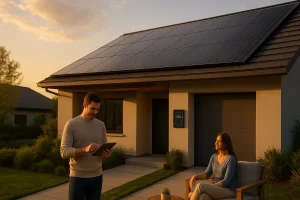
Market Evolution Predictions
Residential solar capacity will more than double by 2030, emphasizing proper roof compatibility assessment for capturing this expanding market opportunity.
Conclusion: Expert Solutions from Energyscape Renewables
Successfully matching roof types and solar installations requires comprehensive expertise spanning both roofing and solar technologies. The complexity of structural assessment, mounting system selection, and code compliance demands professional evaluation for optimal results.
Energyscape Renewables delivers specialized knowledge across all roof types and solar applications, ensuring every project receives appropriate technical attention. Our certified professionals evaluate structural integrity, climate factors, and long-term performance optimization to maximize system success. Whether addressing challenging tile installations, complex ballast systems, or standard asphalt applications, we provide solutions that enhance both performance and customer satisfaction.
For expanded technical resources and advanced mounting solutions, visit Sunscape Solar to access comprehensive installation support materials.

sjayakanth@energyscaperenewables.com